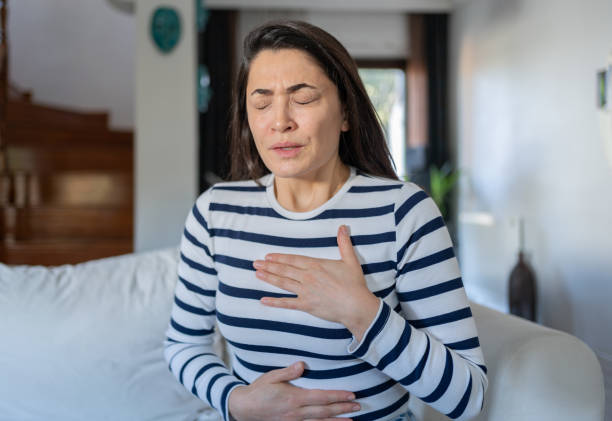Introduction: Why You Can’t Afford to Ignore the Signs of Anxiety
Anxiety is a silent intruder. In the United States, more than 40 million adults live with anxiety disorders, but many don’t even know they have it. Why? Because anxiety doesn’t always look like panic attacks or heavy breathing. It can appear as chronic tiredness, overthinking, irritability, or even physical pain. Ignoring the signs of anxiety in the USA can lead to:
- Poor physical health
- Trouble at work
- Failed relationships
- Depression
- Long-term health issues
The earlier you recognize anxiety, the easier it is to manage.
Let’s uncover the signs you might be missing.
Table of Contents
- Introduction
- What Is Anxiety?
- Why So Many Americans Ignore Anxiety
- 10 Hidden Signs of Anxiety You Shouldn’t Ignore
- Physical vs Mental Signs of Anxiety
- Real Case: How James Missed the Signs
- What to Do If You Notice These Signs
- When to Seek Help
- FAQs
- Final Thoughts
What Is Anxiety?
Anxiety is your body’s response to stress, danger, or uncertainty. While it’s normal to feel anxious occasionally, chronic or extreme anxiety can interfere with daily life.
Anxiety becomes a disorder when:
- It lasts longer than 6 months
- It feels out of control
- It impacts your sleep, focus, or relationships
Why So Many Americans Ignore Anxiety
In the USA, mental health is often misunderstood or stigmatized. People think:
- “It’s just stress, I’ll get over it.”
- “I’m just tired.”
- “I don’t need therapy.”
- “Real men don’t cry.”
This mindset leads to late diagnosis and long-term damage.
That’s why recognizing the early signs of anxiety in the USA is so critical.
10 Hidden Signs of Anxiety You Shouldn’t Ignore
1. Overthinking Everything
Constantly playing out worst-case scenarios? That’s a big red flag.
2. Irritability or Anger
Small things trigger you more than usual. You snap at friends or coworkers.
3. Muscle Tension or Body Pain
Anxiety often shows up physically as tight shoulders, headaches, or unexplained pain.
4. Restlessness or Trouble Sleeping
Your brain won’t stop racing when it’s time to sleep.
5. Constant Fatigue or Burnout
Even after sleeping 8 hours, you feel drained.
6. Avoidance Behavior
You cancel plans, avoid calls, or isolate yourself regularly.
7. Excessive Worrying About the Future
You’re always worried about money, family, job—even without clear reasons.
8. Digestive Issues
Anxiety can disrupt your gut, causing nausea, bloating, or IBS symptoms.
9. Racing Heartbeat or Shortness of Breath
Even in calm environments, your body goes into “fight or flight” mode.
10. Perfectionism or Fear of Failure
You fear being judged or making mistakes so much it paralyzes you.
Physical vs. Mental Signs of Anxiety
| Physical Signs | Mental Signs |
|---|---|
| Sweating | Overthinking |
| Tense muscles | Fear of failure |
| Headaches | Imposter syndrome |
| Trouble sleeping | Excessive guilt |
| Nausea | Irrational fears |
Real Case: James Missed the Signs
James, a 33-year-old software engineer in Texas, thought he was “just tired.” He had:
- Constant shoulder pain
- Trouble sleeping
- Snapped at his wife often
- Stopped hanging out with friends
Months later, a panic attack sent him to the ER. The diagnosis? Generalized Anxiety Disorder.
He now says, “If I had understood the signs of anxiety earlier, I would’ve gotten help.”
What to Do If You Notice These Signs
- Track Your Patterns: Keep a journal of symptoms
- Talk to Someone: A trusted friend or family member
- Use Mental Health Apps: Try Calm, BetterHelp, Moodpath
- Exercise and Meditate: Reduce cortisol and increase serotonin
- Limit Caffeine and Alcohol: Both make anxiety worse
- Breathe Deeply: Try 4-7-8 breathing daily
When to Seek Professional Help
If these signs:
- Last more than a few weeks
- Interrupt your work or relationships
- Make it hard to focus, eat, or sleep
Then it’s time to talk to a therapist or counselor. There are many affordable options, including online therapy in the USA via platforms like BetterHelp, Talkspace, or local clinics.
FAQs: Signs of Anxiety in the USA
👉 Is anxiety common in the USA?
Yes. Anxiety disorders affect 1 in 5 adults in the USA—making it the most common mental health condition.
👉 What’s the difference between stress and anxiety?
Stress is usually caused by a specific event. Anxiety lingers and affects your overall wellbeing—even without a clear cause.
👉 Can anxiety be treated without medication?
Absolutely. Many people recover using therapy, exercise, breathing exercises, and lifestyle changes. But medication may be helpful in severe cases.
👉 What age group is most affected by anxiety?
People aged 18–34 are the most affected, especially students and early-career professionals in the U.S.
Final Thoughts: Listen to Your Mind and Body
Anxiety doesn’t always scream. Sometimes it whispers. It hides behind workaholism, perfectionism, and fatigue.
If you recognize these signs of anxiety in the USA, don’t ignore them.
Your mental health is just as important as your physical health.
The earlier you take action, the faster you recover.
